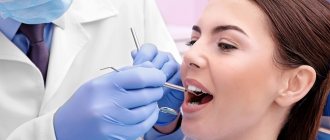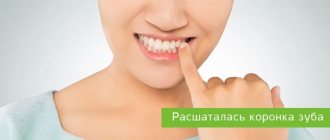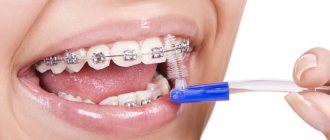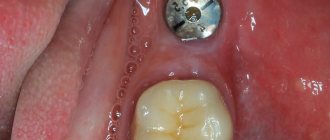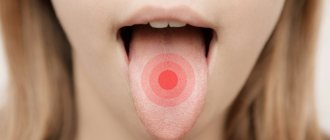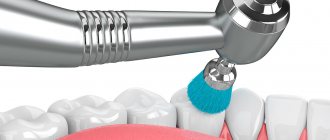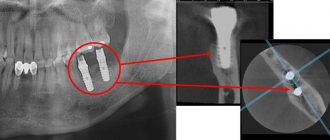Timely detection and treatment of dental diseases is considered a necessary and important condition for maintaining dental health. Even with careful daily oral hygiene, no one can be protected from the development of severe diseases of the teeth and gums, which a preventive examination at the dentist will help identify, because at the initial stage the disease can develop almost asymptomatically.
Experts strongly recommend undergoing a professional examination every six months, even without visible dental problems. Many people are interested in the question: Why exactly after six months? Based on numerous studies, scientists have concluded that this period is optimal for most oral diseases to begin their clinical manifestation. Therefore, they are easy to diagnose and treat because they are in the primary stage of development.
Of course, today the level of dental care is very high, which makes it possible to restore even severely damaged teeth and cope with any ailments of the oral cavity. However, it is better to prevent the disease than to treat it later in a long and tedious manner. Preventive dentistry is designed to recognize pathology in advance and eliminate it as soon as possible.
What is a dental examination?
During the examination, an experienced dentist-therapist, having the appropriate knowledge and the necessary tools, will pay attention to even the slightest changes in the oral cavity, and if pathologies are detected, he will take measures to eliminate the disease.
External inspection includes:
- the condition of the gums is assessed to determine the prognosis of possible diseases;
- determining the correct bite;
- mobility and loosening of teeth is eliminated;
- the condition of previously installed fillings is assessed;
- the enamel of the teeth is examined for caries damage;
- the integrity of dentures and crowns is checked;
- An X-ray examination may be performed (when an image of the teeth is necessary).
After the examination, the doctor makes a conclusion about the presence or absence of dental diseases, and issues recommendations regarding preventive measures or treatment.
Probing
This research method can be carried out to evaluate the reliability and density of the enamel of real teeth and artificial crowns. To do this, the dentist uses an instrument called a probe. With its help, it is possible to determine the presence of carious cavities and the stage of tissue damage. The method is also actively used for the diagnosis of other non-carious diseases, for example, hypoplasia, erosion, fluorosis, etc.
Probing is an absolutely painless and safe process. To check your teeth, the doctor simply needs to run the blunt end of his instrument over the surface of the enamel. This allows you to find irregularities and defects, determine density and hardness. This device can also be used to detect the presence of gum pockets.
Additionally, the dentist can check for gaps between the gum and the crown (or between healthy areas of enamel and the filling material). If there is a severe gap, the filling will need to be reinstalled.
What problems can be identified promptly during a dental examination?
If a visit to the dentist is postponed for an indefinite period, then existing problems may begin to progress, as a result of which more time, effort and money will be spent on eliminating them.
The main dental diseases that are identified during examination in the dental chair include:
- Caries. If caries forms at an early stage, it is possible to cure it in one visit to the dentist. If treatment is not carried out in a timely manner, common complications such as pulpitis and periodontitis may occur, which complicates the preservation of the tooth.
- Gingivitis. Due to the formation of tartar and plaque, this disease begins to progress, which in turn can cause periodontitis, in which inflammation of the soft tissues around the tooth occurs, the ligament of the root and bone is disrupted, and the patient may lose the tooth.
- Periodontal disease. This disease manifests itself in the gradual destruction of periodontal tissue, which can lead to the loss of healthy teeth.
As we can see, the importance of the examination cannot be underestimated; it serves as a kind of starting point for drawing up a further action plan to maintain oral health.
By signing up for a preventive examination, you will receive competent advice and find out all the answers to questions that are of concern to most patients about proper oral care:
- which brush and toothpaste is right for you;
- Are you brushing your teeth correctly?
- what additional hygiene products should be used for prevention purposes;
- how to properly use an irrigator, floss, etc.
Also, if necessary, the dentist can prescribe a number of preventive measures, such as:
- Tartar/plaque removal procedure;
- whitening;
- fluoridation;
- fissure sealing, etc.
Don’t wait until dental problems make themselves known and begin to bother you, because it is much easier to set aside time for a professional examination than to spend days, and sometimes even whole weeks, on grueling treatment.
Palpation and percussion
This technique is used to assess the health of periodontal tissues. To do this, the specialist carefully moves the tooth to the right and left using medical tweezers, checking its mobility and ability to move. If the coronal part moves easily, this indicates the presence of serious inflammation or indicates tissue swelling.
Such consequences can occur due to severe injuries to the jaw, as well as diseases such as periodontitis, periodontitis or periodontal disease. Using palpation, the doctor assesses the degree of pain of the procedure for the patient, because pain can be of varying intensity depending on the complexity of the pathology and its location.
Percussion is a method in which the doctor gently taps the surface of the tooth crowns with a probe or other device. If unpleasant sensations occur with horizontal impacts, this indicates the development of periodontitis; if with vertical impacts, then this indicates an inflammatory process in the pulp chamber. Based on the data obtained, the specialist can make a preliminary diagnosis and send the patient for further examination. Sometimes, during the general examination, an x-ray is prescribed; this is necessary to confirm the diagnosis.
How does plaque affect the health of the oral cavity?
The development of many dental diseases is associated with the appearance of plaque. Harmful bacteria and their decay products have a detrimental effect on the enamel. Over time, plaque hardens and leads to the formation of tartar, which not only causes aesthetic problems, but also destroys the enamel structure and affects the health of the gums. And constantly multiplying microbes and bacteria provoke inflammatory processes and contribute to the progression of the focus of caries development. By causing bleeding and inflammation of the gums, pathogenic bacteria can cause the loosening and subsequently even loss of completely healthy teeth.
During an examination, an experienced dentist may recommend that the patient undergo a procedure for removing tartar and plaque to improve the health of the oral cavity and improve its general condition.
Effective measures to prevent the formation of plaque and tartar include:
- thorough oral hygiene;
- regular dental examinations;
- teeth cleaning at the dentist.
Palpation examination
Using this research method, inflammatory processes are identified, as well as the nature and stage of development of periodontal destruction. To more accurately understand the condition of the tooth, they begin to move it in different directions using tweezers, this makes it possible to understand how it moves in the alveolus:
- In three directions
- In five together with vertical
- In one
- In two.
If a tooth gives in very easily with a little force, this means that there are deviations from the norm, which may be accompanied by tissue swelling and an inflammatory process. These symptoms may indicate the presence of traumatic tooth lesions, such as periodontal disease, periodontitis and periodontitis. It is by palpating the cheeks and gums that the “One to One” doctor receives information about the presence of purulent or bloody discharge, pain, compaction and swelling. A big plus that can be given to the method is that it allows you to instantly obtain the research result upon examination. The only negative that unfortunately exists is the inability to make a definitive diagnosis.
Where can you find qualified dental specialists in Ivanteevka?
You can get professional dental care and undergo a preventive examination of the oral cavity at Sanident Dentistry, which provides a full range of services in Shchelkovo and in the urban district of Ivanteevka. We offer affordable prices and high-quality dental treatment. We have the most modern diagnostic equipment, proven painkillers, modern filling materials and instruments.
In our clinic you can undergo such hygiene procedures as: fluoridation, removal of dental plaque, AIR FLOW teeth cleaning, teeth whitening using professional preparations, complete professional oral hygiene and much more.
Entrust your health to professionals, do not allow the disease to enter the active stage of development, prevent the disease in a timely manner. Our experienced professionals are ready to help you with this.
The comprehensive dental clinic "Sanident" is located at the following addresses:
- Ivanteevka, st. Novoselki, 4 (Ivanteevka railway station);
- Shchelkovo, st. Central, 80 (railway station Voronok).
How often do you need to come for a preventive examination to a specialist?
Ideally, you should visit the dentist at least once every six months. However, this recommendation is of a general nature; in each specific case, the frequency of visits to the dental clinic will be determined individually. This depends on the general condition of the oral cavity, predisposition to caries, the general condition of the body, and the financial capabilities of the patient.
Make an appointment
Thank you, your application has been accepted!
If you turn to the InVite Medical clinic for help, our specialist will definitely advise you about future preventive examinations, explain their importance, and set a date for the next visit.
Features of children's prosthetics
As mentioned above, the need for dental prosthetics in children arises in the case of premature loss of baby teeth and is used to preserve space in the oral cavity for the normal growth of permanent teeth. Children's dentures must meet a number of requirements:
- dentures should be as comfortable as possible, since children perceive foreign objects in the oral cavity with particular sensitivity;
- Under no circumstances should dentures damage healthy baby teeth;
- the prosthesis should facilitate the growth of new permanent teeth as much as possible, and not impede it;
- prosthetics must be aesthetic so that the child does not have a reason to be dissatisfied with himself and his appearance, as well as ridicule from peers;
- the prosthesis must be hypoallergenic.
The main problem when visiting a pediatric dentist is anesthesia. Children are afraid of the pain that will follow during dental treatment, but they are even more afraid of injections in the gums. So what to do in this case? In modern dentistry, pediatric anesthesia is carried out with lidocaine, which is simply moistened with a cotton swab and the child’s mucous membrane is treated. This will avoid pain and make the need to visit the dentist a little more pleasant.
From all of the above it follows that the child must be shown to the dentist almost from the first days of life. Correct and timely examination will help to avoid the development of oral diseases in the child, as well as the formation of malocclusion.
What does a dental consultation in Moscow include?
An initial visit to a specialist may have a preventive, diagnostic or therapeutic purpose. Primary medical appointment includes:
- Taking anamnesis;
- Thorough inspection;
- Completing medical documentation;
- Development of an individual examination and treatment plan.
A consultation with a dentist will allow you to:
- Identify the pathological process in a timely manner long before the appearance of clinical symptoms;
- Carry out the necessary treatment quickly;
- Prevent further development of the disease.
This is why it is recommended to visit the dentist at least twice a year!
Top most frequently asked questions to pediatric dentists and orthodontists
At what age should a child be shown to the dentist for the first time?
If a baby develops strong, white teeth one after another, starting from 6-8 months, then the child should be brought to the pediatric dentist at 2 years of age.
To be examined by an orthodontist at 4-5 years of age.
Why treat baby teeth?
Any tooth affected by caries is a source of chronic infection, which has a negative effect on the entire body. This chronic source of infection must be removed as soon as possible. How? The best way, if you think about the future, is to cure the tooth. The fastest way is to remove the causative tooth. If you treat a baby tooth, it will save space for the future permanent tooth and continue to take part in chewing. If a tooth is removed, there will be very little or no space left for a permanent tooth. When changing teeth, the permanent tooth will erupt as a “second row”, causing malocclusion.
If a doctor removes a baby tooth, won’t the permanent one immediately erupt in its place?
The permanent tooth will erupt when its time comes. Nature has set a strictly defined time for each tooth to appear in the oral cavity. Removing the milk precursor can speed up the process quite a bit.
Why are children's temporary prophylactic dentures made before the eruption of a permanent tooth?
If a baby tooth still had to be removed because it was too late to treat it, then you should definitely consult with an orthodontist. Nature does not tolerate emptiness and very quickly this emptiness, which formed after tooth extraction, turns into a gap due to the movement of neighboring teeth and there is simply no room left for the future permanent tooth in the dentition.
If after the removal of a baby tooth there is 1 year or more left before the permanent tooth erupts, then a plastic tooth is made that will save space for the permanent tooth. This is a children's prosthetic prosthesis.
Are there really teeth that come out immediately permanent, without milk predecessors?
Yes, everyone knows the sixth, seventh and eighth (“wisdom”) teeth, if you count from the first central tooth in each direction. Immediately permanent, without milk precursors, the following appear: the 6th tooth (at 5-6 years), the 7th (at 11-12 years), and the wisdom tooth after 16 years.
At what age is it most effective to install braces?
The ideal age for installing braces is 9-11 years old. At this age, due to the growth of the jaw, the absence of the 7th teeth and the opportunity to teach the child to take good care of the braces system, the orthodontist has a good chance of completing the treatment “without tooth extraction,” straightening the teeth and even completely correcting the bite. Also, treatment at this age has the most favorable prognosis regarding the stability of the result obtained.
What to do if a child has “weak” enamel and uneven teeth?
If the situation is critical, the bite is severely disturbed, or the child does not smile due to crooked teeth, and the enamel is significantly weakened, we suggest installing a brace system on the tongue side. But not a classic lingual brace system, which will constantly come off for a child and impair diction, but an INCOGNITO brace system with wide bases, individually manufactured for each of your child’s teeth in a laboratory in Germany.
Fissure sealing – what is actually being sealed?
Many parents have a negative attitude towards this procedure, believing that caries occurs under the sealant (special varnish). Given the technology, this is not the case. After cleaning the tooth with a special paste using ultrasound, the doctor applies a thin layer of fluoride varnish, which smoothes out the deep anatomical pits and grooves (fissures) on the tooth. If sealing is not done, then over time an invisible white coating accumulates in the fissures, containing microorganisms that, in the course of their vital activity, release acids and the tooth enamel begins to gradually dissolve, caries appears in the “white spot” stage, which is not visible to the eye. And when the coloring of this caries with pigments appears and it becomes noticeable, the caries already affects the entire thickness of the enamel. The sooner you contact a pediatric dentist, the greater the chance that there is no caries in the fissure in the form of a “white spot.” The doctor can easily check this by staining the chewing surface of the tooth with a caries marker before sealing.
What does it mean if all your teeth have been replaced, but one or two baby teeth still won’t fall out?
This means that the permanent tooth is “stuck” somewhere in the bone tissue and needs to be pulled into place. There may be another situation - the germ of a permanent tooth has not formed. In both cases, you should definitely consult an orthodontist.
If an X-ray of a 12-year-old child does not show the germ of a permanent tooth, can it appear later?
No, he can not. If the tooth germ is absent on the x-ray, and therefore in the bone tissue, it will never appear again and this permanent tooth will be absent from the oral cavity. The exception is wisdom teeth.
When and where to “cut” the frenulum, in the maternity hospital or in dentistry?
In the maternity hospital, the frenulum of the tongue is cut when the child cannot perform sucking movements due to the low mobility of the tongue, which is restrained by this very frenulum.
The frenulums of the upper and lower lips, in the case of a gap between the central teeth (diastema), are trimmed (in these cases, it would be more correct to say frenuloplasty) not earlier than the permanent incisors, second from the center, begin to erupt. Such plastic surgery can be performed correctly by a doctor who knows a special technique, which subsequently helps to close the diastema. Plastic surgery of the frenulum of the upper and lower lips is done only in the direction and under the supervision of an orthodontist, otherwise the diastema may persist.
What does it mean if a child has snow-white spots and stripes on his permanent teeth that were not there before?
This means that the child is not cleaning the surface of the tooth enamel properly. This may be a lack of knowledge of teeth brushing techniques or a toothbrush that is too soft. Or – lack of regular teeth brushing as such. A thin, dense layer of plaque that has accumulated over weeks and months on the surface of the tooth dissolves the enamel and it begins to turn white (demineralize).
Why wear trainers and plates when you can get braces right away?
Trainers, like plates, are effective at a certain age as the child grows. It is at this age that jaw growth can be directed in the desired direction, and the braces system can be installed early. Braces are installed at a later age to completely straighten the teeth.
Why do children need to be treated by a special dentist – a pediatric dentist?
Milk teeth are very different from permanent teeth, but their main feature is the location of the “nerve” close to the surface of the tooth, absorbable roots and the proximity of the permanent tooth germ. Children's permanent teeth also have a number of features, the most important of which are immature enamel and developing (growing) roots. Only a dentist with special education knows how to treat children’s teeth.
What to do if the baby tooth has not yet fallen out, but the permanent one is trying to erupt nearby?
It is necessary to contact a pediatric dentist as soon as possible to remove a baby tooth to make room for a permanent tooth. If a baby tooth is removed on time, there is a chance that the permanent tooth will erupt smoothly.
Is it normal that at the age of 5 – 7 years a child develops gaps between his milk teeth, which were previously tightly spaced?
This is how nature intended. Before changing teeth, the child’s jaws begin to grow, the size of the baby teeth does not change, and this contributes to the appearance of gaps that will be needed to accommodate future permanent teeth.
If gaps do not appear at this age, it means something has gone wrong and you should consult an orthodontist.
Anna Redko, chief physician of the Russian-German network of dentists “Clinic of Doctor Lange”.
How to make an appointment at the clinic
A consultation with an implantologist is carried out after making an appointment with a doctor - through personal contact or remotely (by phone, through the website or the clinic’s messengers). Some institutions have 24-hour support - you can call or make an appointment at any time. You can contact others only during business hours from 9 a.m. to 6 p.m. When contacting, be sure to tell us about the purpose of the future visit so that an appointment can be made with the right specialist – a dentist-implantologist.
“I was looking for an implantologist based on reviews on the Internet. I re-read the forums and found several good doctors. Then I started looking at the websites of the clinics where they work. Even in the chat on the sites I asked what interests me. Because it’s a front tooth, and I know that they don’t put a crown on just one tooth at once. But they quickly made an appointment for me, literally within a day. And the doctor, after a consultation and x-ray, told me what and how best to do in my case. Everything is very clear and accessible (by the way, the crown can be placed right away).”
Irina P., review from gidpozubam.ru
For middle aged children (5-8 years old)
A detailed verbal account of the reception.
If the child has already grown out of home scenes and cartoons, then it is quite possible to talk to him “like an adult”: tell him what dentists do, and not promise that the child will not feel anything at all. Explain that it may hurt a little, but it won’t last long and for such a big person it’s not scary at all. We can say that taking blood from a finger is much more painful, so since he tolerates this procedure, then an appointment with a dentist is “easy” and not a problem for him.
Authoritative opinion.
The opinion of older children (brothers, sisters, classmates, friends) that dental treatment is not painful and not scary will help. Talk to them, their opinion will be authoritative for your child. Moreover, he will not want to lose face and look like a crybaby in the eyes of his friends, because he will then be asked (at your suggestion) about how the reception went.
A good example.
An excellent way to practically show your child that visiting the dentist is a common occurrence is by example. Let the child come into the office when the tooth of one of the parents or an older brother or sister is being treated. Let him personally ask them about their sensations, listen to sounds that will already be familiar at his appointment. Let him ask the doctor questions (when he finishes work) and, quite possibly, the result will be the child’s desire to sit in the chair and roll up and down.
Of course, it is better to coordinate this point with your treating dentist so that he can better plan his time.
Encouragement again.
You don’t have to directly promise your child “buns and gingerbread cookies,” but to reinforce a positive attitude, casually take a walk to a cafe after the reception, “spontaneously” go to a toy store, “unexpectedly” find out that Aunt Masha has an extra movie ticket... .

